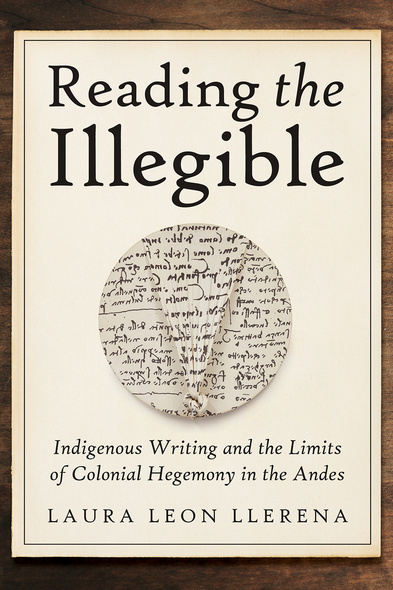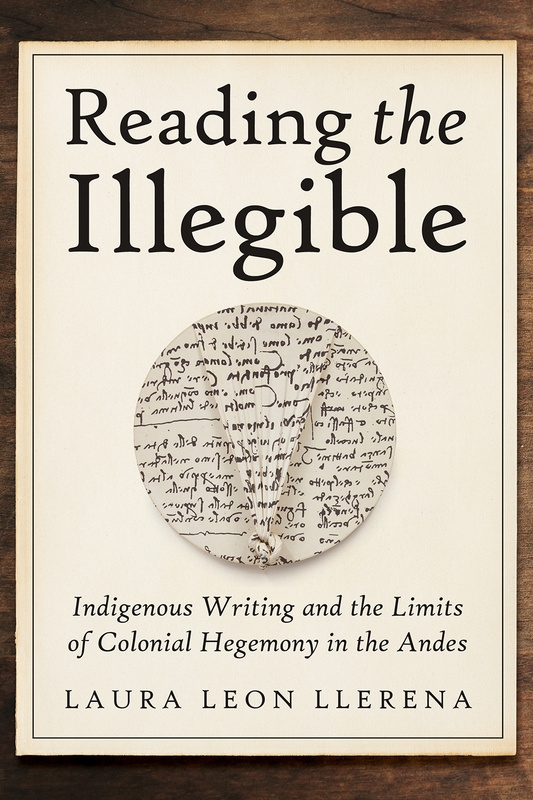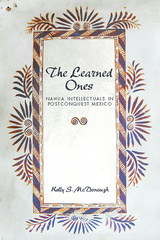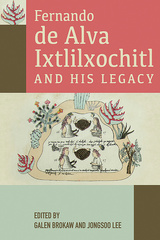
264 pages, 6 x 9
12 b&w illustrations
Hardcover
Release Date:10 Jan 2023
ISBN:9780816547531
Reading the Illegible
Indigenous Writing and the Limits of Colonial Hegemony in the Andes
The University of Arizona Press
Reading the Illegible examines the history of alphabetic writing in early colonial Peru, deconstructing the conventional notion of literacy as a weapon of the colonizer. This book develops the concept of legibility, which allows for an in-depth analysis of coexisting Andean and non-Native media. The book discusses the stories surrounding the creation of the Huarochirí Manuscript (c. 1598–1608), the only surviving book-length text written by Indigenous people in Quechua in the early colonial period. The manuscript has been deemed “untranslatable in all the usual senses,” but scholar Laura Leon Llerena argues that it offers an important window into the meaning of legibility.
The concept of legibility allows us to reconsider this unique manuscript within the intertwined histories of literacy, knowledge, and colonialism. Reading the Illegible shows that the anonymous author(s) of the Huarochirí Manuscript, along with two contemporaneous Andean-authored texts by Joan de Santa Cruz Pachacuti and Felipe Guaman Poma de Ayala, rewrote the history of writing and the notion of Christianity by deploying the colonizers’ technology of alphabetic writing.
Reading the Illegible weaves together the story of the peoples, places, objects, and media that surrounded the creation of the anonymous Huarochirí Manuscript to demonstrate how Andean people endowed the European technology of writing with a new social role in the context of a multimedia society.
The concept of legibility allows us to reconsider this unique manuscript within the intertwined histories of literacy, knowledge, and colonialism. Reading the Illegible shows that the anonymous author(s) of the Huarochirí Manuscript, along with two contemporaneous Andean-authored texts by Joan de Santa Cruz Pachacuti and Felipe Guaman Poma de Ayala, rewrote the history of writing and the notion of Christianity by deploying the colonizers’ technology of alphabetic writing.
Reading the Illegible weaves together the story of the peoples, places, objects, and media that surrounded the creation of the anonymous Huarochirí Manuscript to demonstrate how Andean people endowed the European technology of writing with a new social role in the context of a multimedia society.
Drawing our attention to the central question of ‘legibility’ as a means of understanding the complex processes of reading and writing across disparate record-keeping systems, this meticulously researched study of the production and reception of the Huarochirí Manuscript opens new paths for understanding how Native knowledge became inscribed in European letters. Grounded in careful archival research, Leon Llerena’s magnificent study of textual production is rigorously represented in its sociopolitical context.’—Amber Brian, author of Alva Ixtlilxochitl’s Native Archive and the Circulation of Knowledge in Colonial Mexico
‘That Reading the Illegible has recalled compatible ideas across such varied disciplines speaks to this contribution’s wide-ranging appeal. The significance of the Andean texts on its 'imaginary table' is matched only by the adeptness with which Leon Llerena guides us through them.’—Manuel Medrano, Harvard University,Hispanic American Historical Review
Laura Leon Llerena is an assistant professor at Durham University (UK). Her research concentrates on the circulation of knowledge produced by and about Indigenous peoples from the sixteenth to the eighteenth centuries.








